Volkswagen's retro-themed pure-electric people-carrier/van, the ID.Buzz, has taken its time getting to New Zealand. But this month's announcement that it will go on sale mid-year comes at an apt time, because the varied and sometimes very idiosyncratic range of vehicles collectively known as the "VW Bus" is celebrating its 75th birthday.
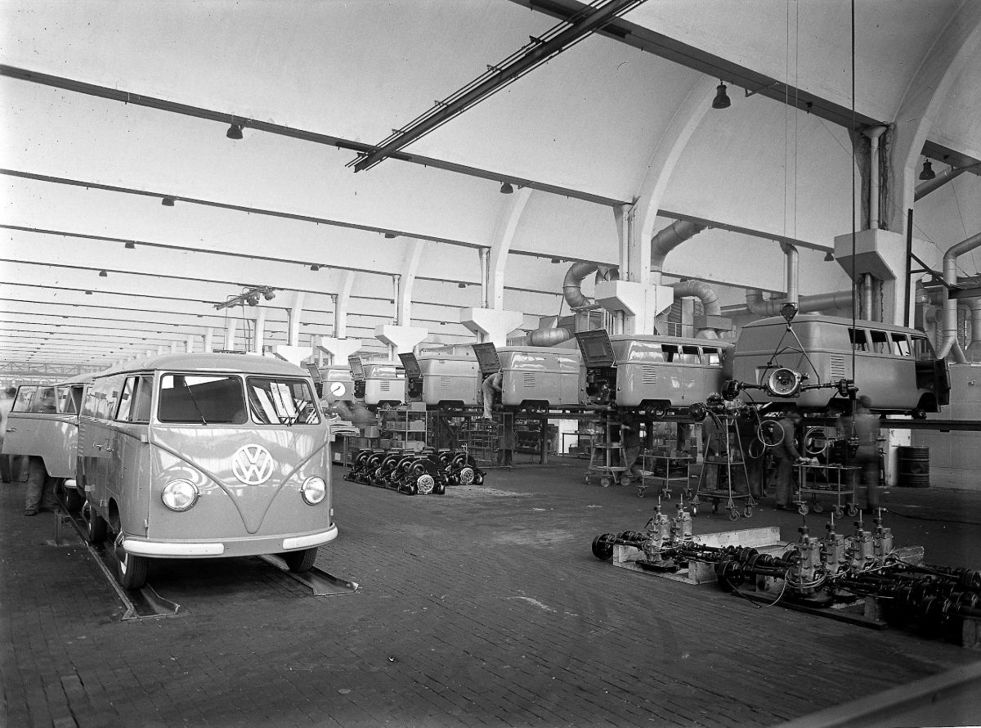
The first Transporter (T1) went into production on 8 March 1950. It has grown over the decades into three product lines in 2025: Transporter/Caravelle, Multivan/California and ID.Buzz/ID.Buzz Cargo.
The latest generation also marks a significant shift in the way the Bus is engineered. From the T1 of 1950 to the T6 of 2015, one platform always provided the base for all versions. But from 2021 and the introduction of the T7 Multivan with electrification, different derivatives are their own platforms.
The T7 Multivan is in fact based on a VW Group passenger-car platform (called MQB). The pure-electric ID.Buzz (2022) is on the MEB EV base (also used for for EV passenger cars), while the latest Transporter/Caravelle (2025) is on a shared platform with the Ford Transit.
VW T1: 1950-67
VW was already five years into production of the Beetle, also known as Type 1. On March 8, it started production of a second product line: an affordable van. Within the company it was called Type 2, but officially it was "Transporter".
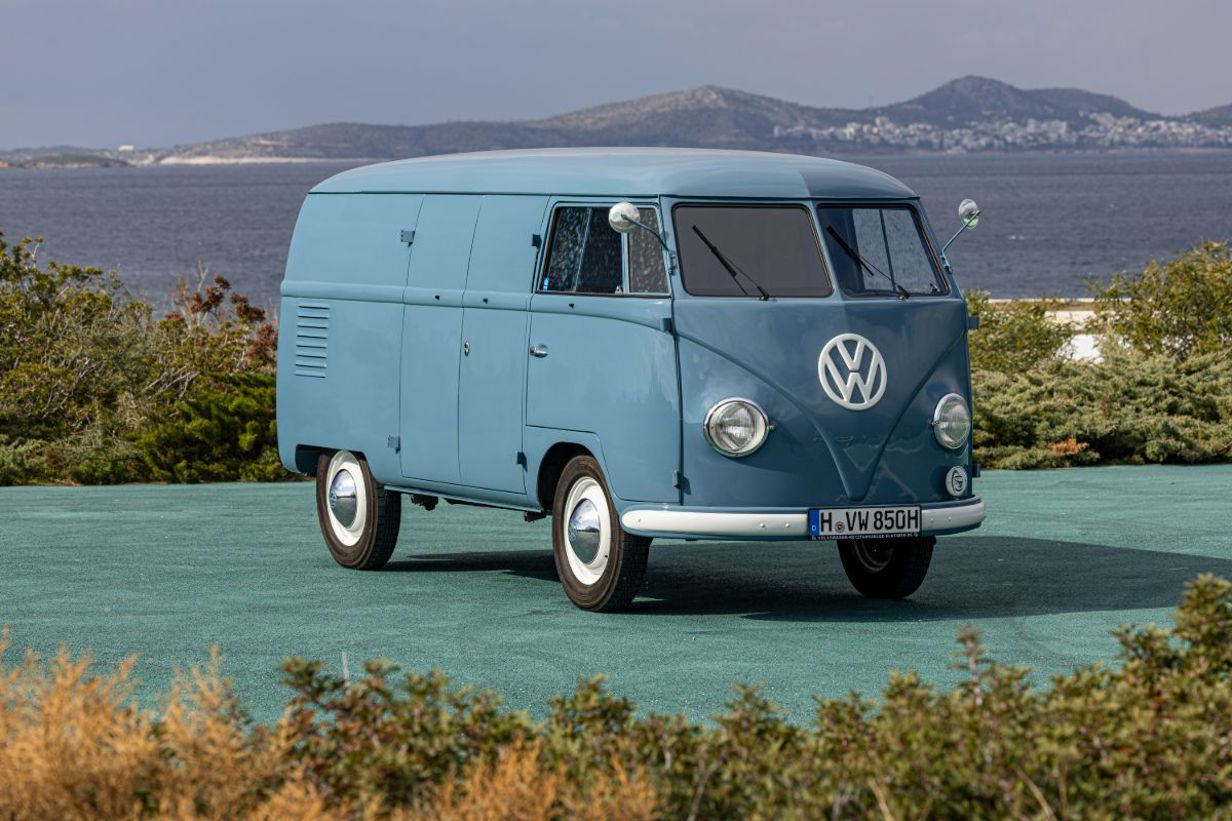
As early as 1949, VW had wanted to register the name "Bulli" (a portmanteau of "bus" and "transport wagon") with the patent office, but another company had previously secured the rights for a snow groomer. It became a nickname for the vehicle anyway.
The first version of the 4.1m-long T1 was a panel van. The two-piece split-window windscreen resulted in it being given the nickname “Splittie”. The 18kW flat-4 engine from the Beetle was later upgraded to 32kW. A Kombi version was launched in April 1950, followed by a minibus and a dropside.
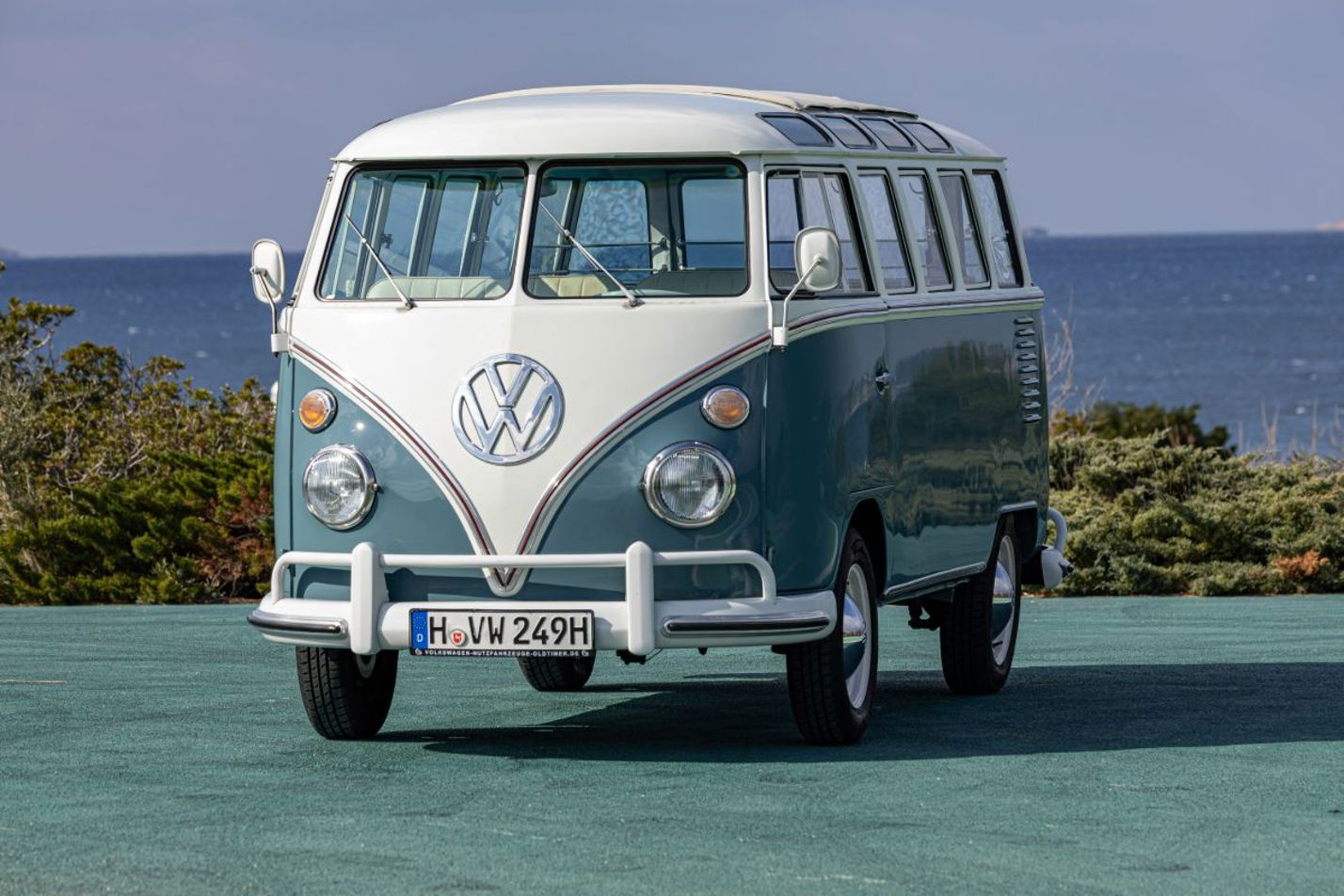
The model that is today considered the most legendary of all classic VW Bus vehicles made its debut in June 1951: the "Small Bus Special Version", or Samba bus. It had room for nine people and came with up to 23 windows, two-tone paintwork and a luxurious specification, including a panoramic folding roof.
VW T2: 1967-79
As a camper van, the T2 became an iconic vehicle for intrepid travellers.

The engineers noticeably modernised the technology, especially in chassis and brakes. With an unchanged wheelbase at 2.4m and a slightly increased width, the body gained 200mm in length. A sliding door was standard.
A major facelift followed in 1972. In 1978, the 4.5 millionth Transporter left the production halls; one year later, German T2 production was discontinued.
But a complete end to production was still a long way off. It continued elsewhere: until 1987 in the Mexican Puebla plant with the air-cooled flat-4 engine, then until 1996 with water-cooled engines. In addition, another 355,000 T2c models would be built at Volkswagen do Brasil, finishing in 2013.
The last 1200 units of the T2 left the factory as the “56 Anos Kombi – Last Edition”.
VW T3: 1979-92
Icons such as the first California and the first Multivan were created on the T3 base.
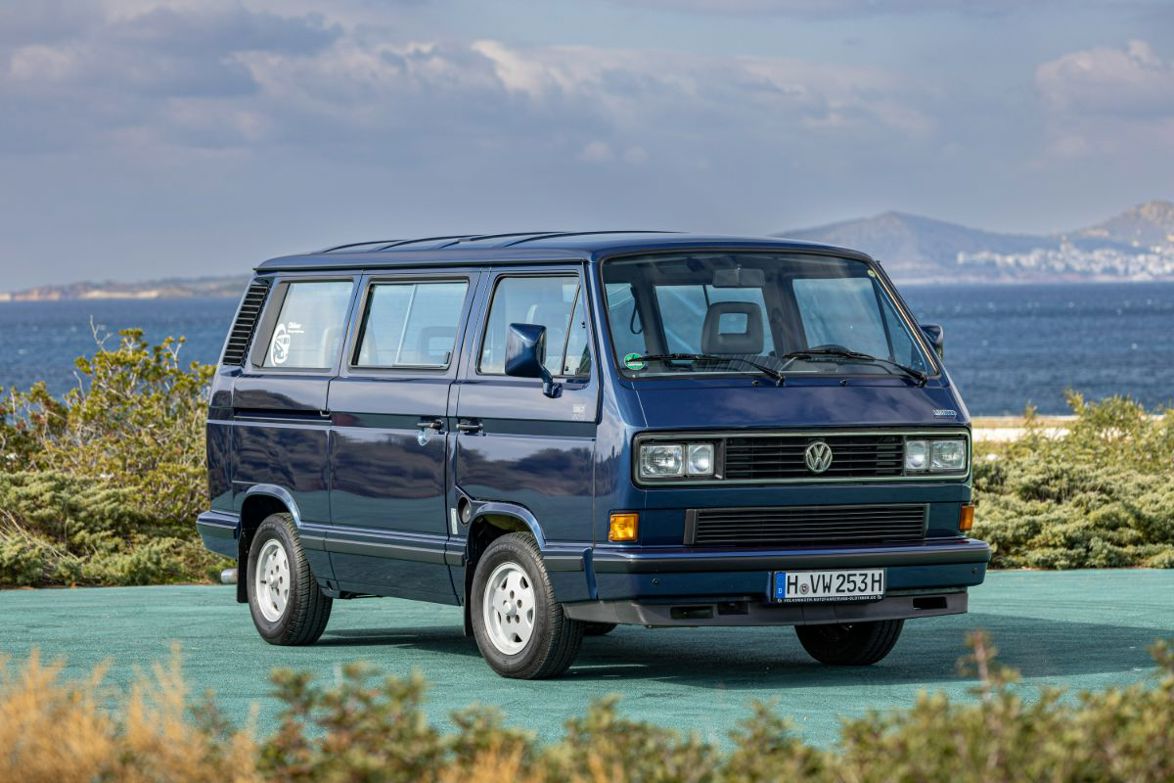
At market launch, the air-cooled T3 flat engines produced between 37-51kW. From 1981, a water-cooled diesel engine was installed at the rear of the Transporter for the first time.
A year later, water-cooled flat engines specially developed for the Bus followed. In 1985, the all-wheel drive models with a viscous coupling joined the range; they were given the name "syncro".
From 1988, the first camper van was built in-house: the California. The new T3 California immediately became a best seller: 5000 units were sold in the first 12 months.
The syncro versions of the T3 and 2500 units of the Multivan Limited Last Edition, which is now a much sought-after classic, were still produced at the Steyr-Daimler Puch plant in Graz until 1992. In South Africa, the T3 was still produced until 2002.
VW T4: 1990-2003
After 40 years of a rear-mounted engine and rear-drive, VW completely changed the drive concept: engines at the front, with front-drive. Unless - as already optionally available in the T3 - the syncro drive was on board, which also powered the rear axle.
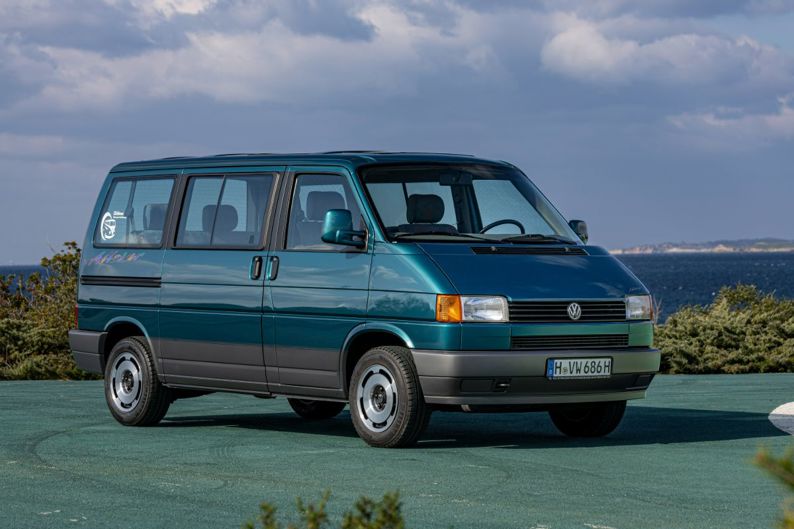
Much more room was now available at the rear, where on the T3 a fair bit of space was still taken up by the engine. Some of this was claimed by the new semi-trailing arm rear axle and the optional syncro all-wheel drive, but the rest created extra cargo space.
The T4 became longer to provide sufficient space for the transversely mounted in-line 4- and 5-cylinder engines, and to create better crash safety.
From 1995, VW Commercial Vehicles acted as an independent brand within the Group. A 2.5-litre 5-cylinder engine was introduced in the T4 as the first turbo-diesel direct injection engine (TDI) in a Transporter. The longer front section of the passenger car variants now allowed the integration of the sporty 2.8 VR6 petrol engine.
VW T5: 2003 to 2015
There were new editions of the Caravelle, Multivan and California.
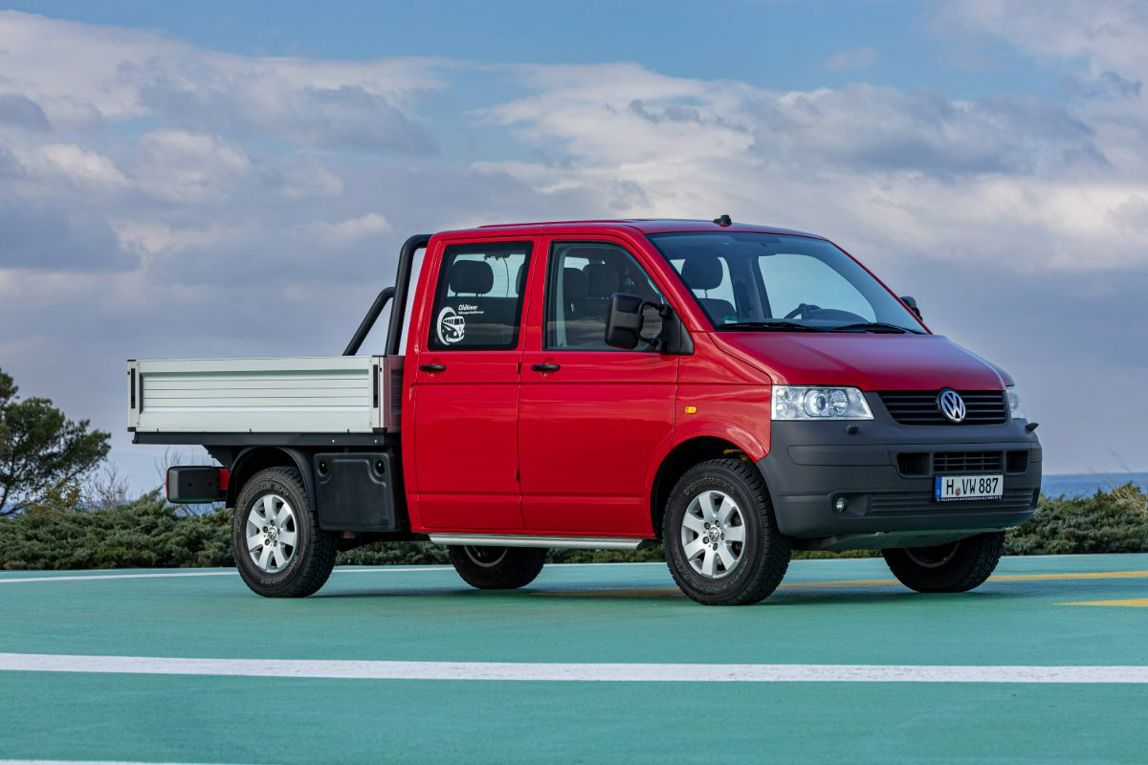
Highlights in the T5 model range included the California NoLimit, limited to 222 units, the extremely luxurious Multivan Business with individual seats in Phaeton style and the all-wheel drive Multivan PanAmericana with all-terrain look.
And in 2007, VW finally obtained what t has wanted from the start: the naming rights for "Bulli".
VW T6 and T6.1: 2015-24
New two-tone paint finishes represented a tribute to the first VW Bus generations. The range of engines included four new TDIs and two new TSIs, each with a capacity of 2.0 litres. Many variants could be ordered with 4Motion all-wheel drive; a highlight was the optional adaptive chassis control DCC.
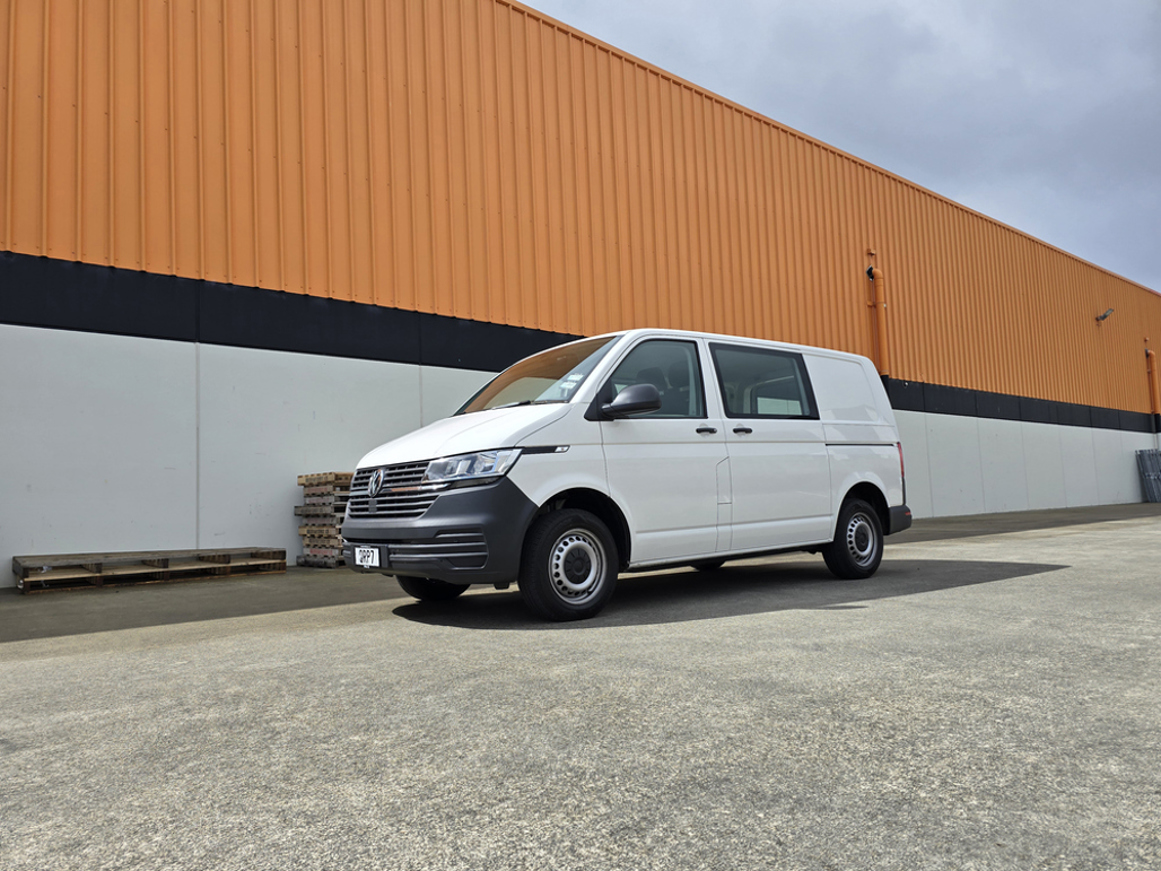
The upgraded T6.1, launched in 2019, was the first Transporter with fully digital instruments.
VW T7 Multivan and California: since 2021 & 2024
For the first time, a VW Bus was based on the passenger-car modular transverse matrix (MQB) platform also used for many VW Group hatchbacks, wagons and SUVs. That also meant the option of plug-in hybrid (PHEV) drive for the first time.
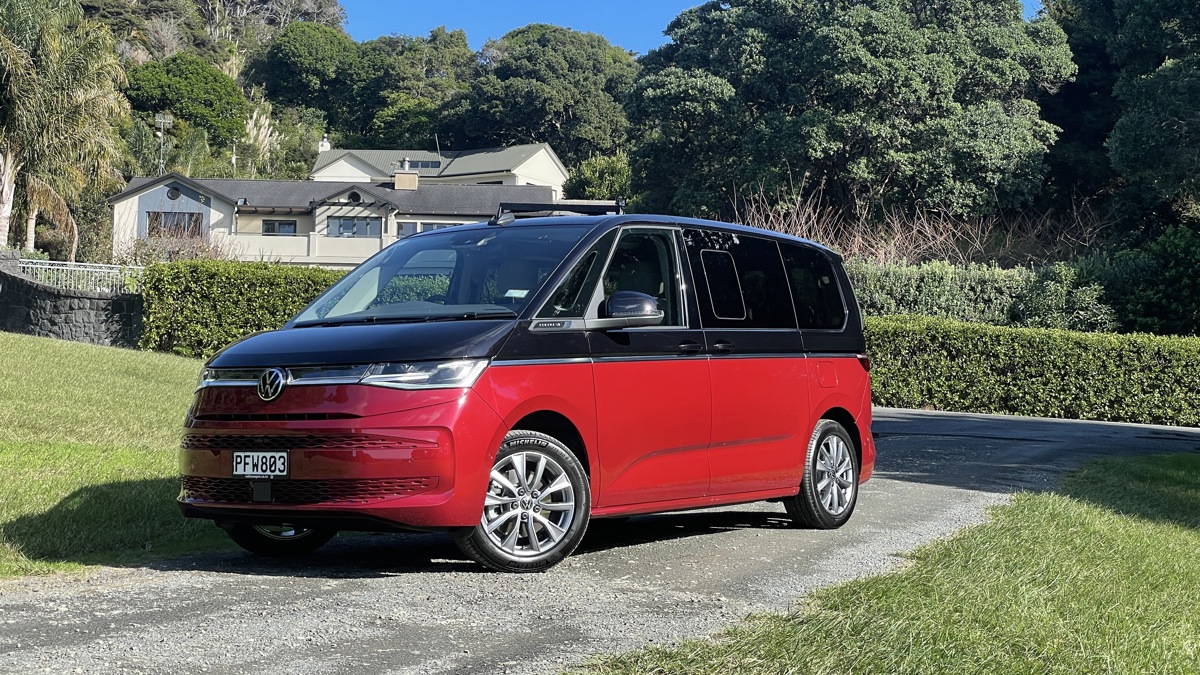
In mid-2024, VW also launched a brand new version of California campervan on the T7 Multivan base.
VW ID. Buzz and ID. Buzz Cargo: since 2022
On 9 March 2022, VW unveiled the production version of the new ID.Buzz. The electric VW Bus is offered in two versions: Pro for "family, leisure and business" says the company, and as the Cargo for "trade, business and industry".
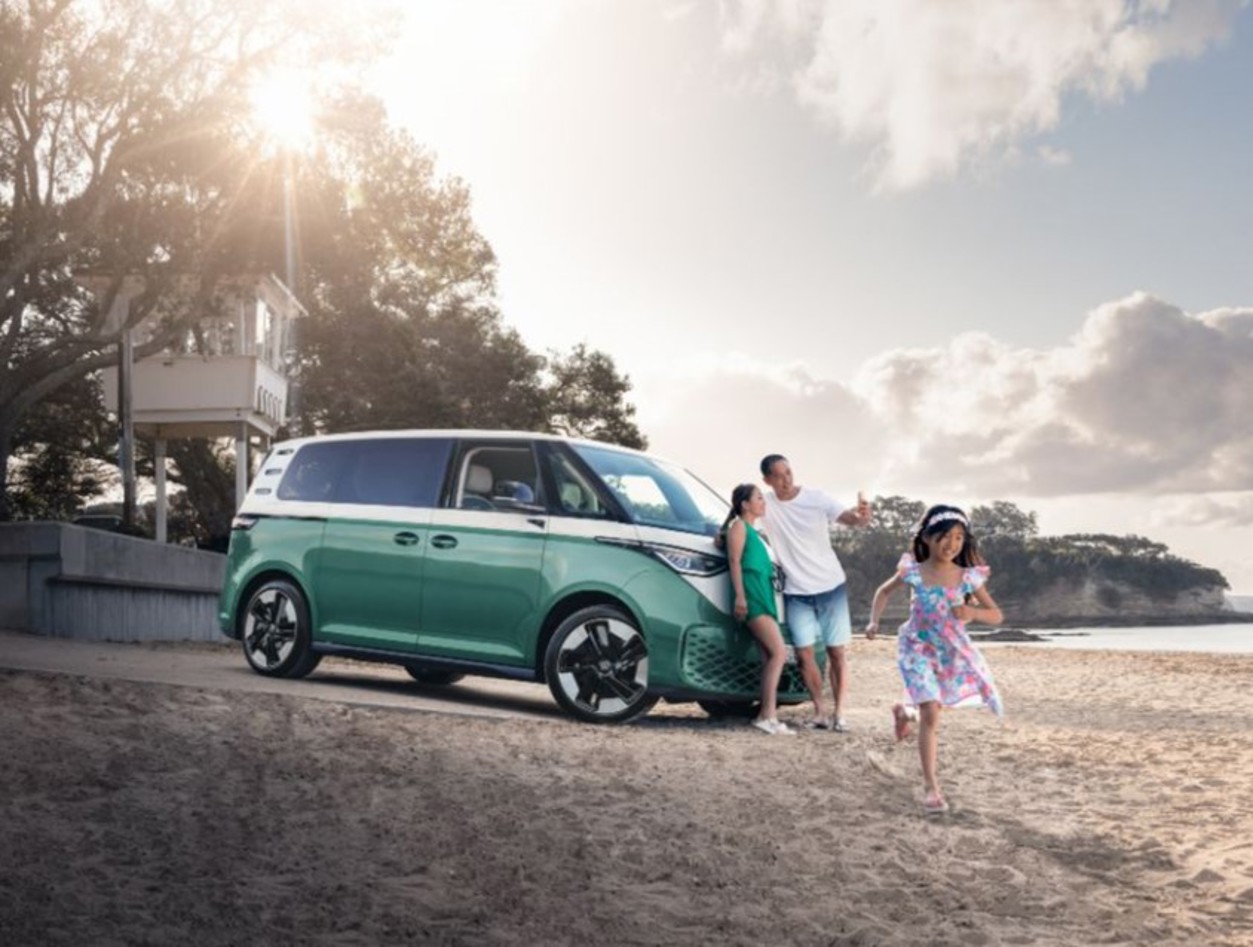
A new rear motor with an output of 210kW and a new 79kWh (net) battery were introduced in 2024 - the model being launched in NZ this year.
The top-of-the-range ID.Buzz GTX (also NZ-bound) with 250kW is the most powerful VW Bus ever produced.
New VW Transporter and Caravelle: since 2024
The current Transporter and Caravelle are the two latest models in the Volkswagen Commercial Vehicles range, this time based on the platform of the latest Ford Transit.
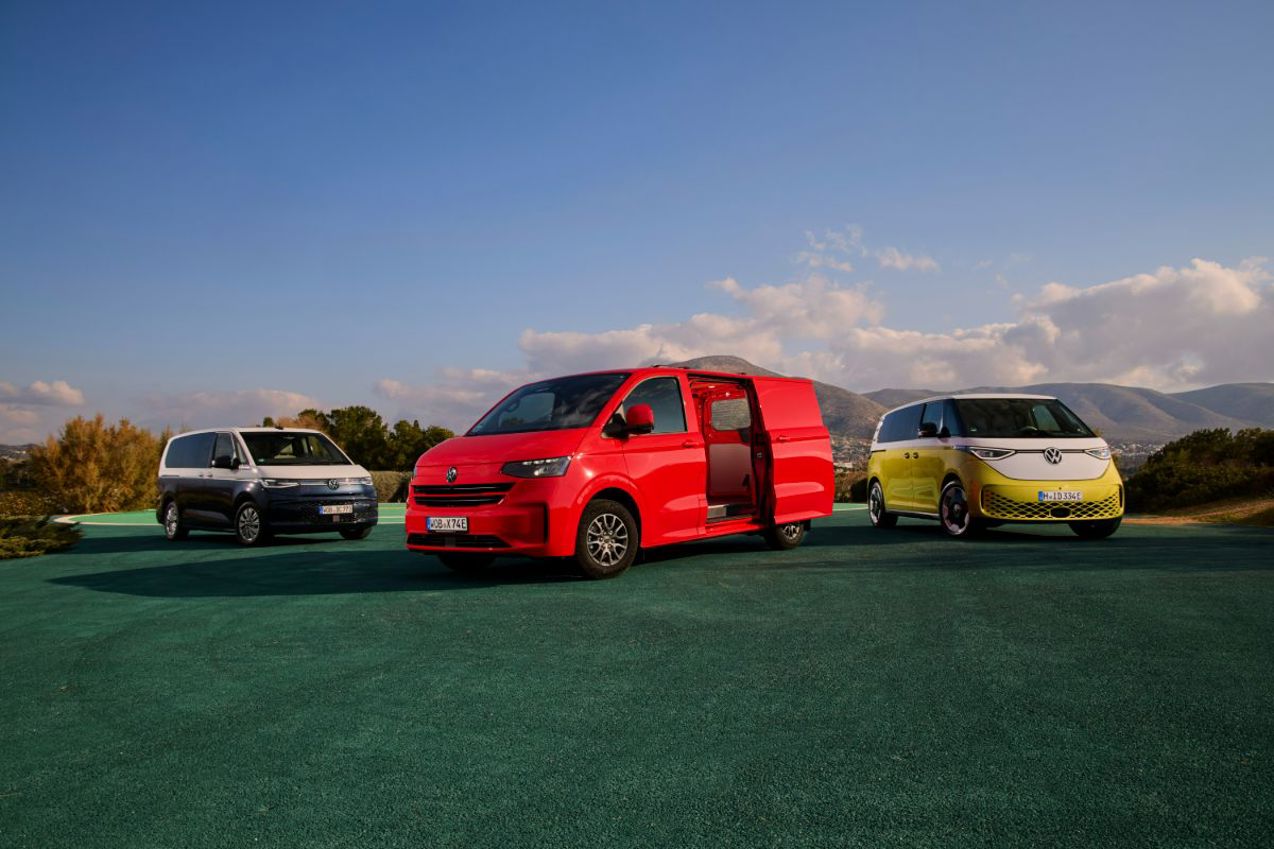
The Transporter is offered globally in various versions, two wheelbases and two roof heights. Available in parallel to the Transporter is the Caravelle sister model, which is designed for professional passenger transport.





